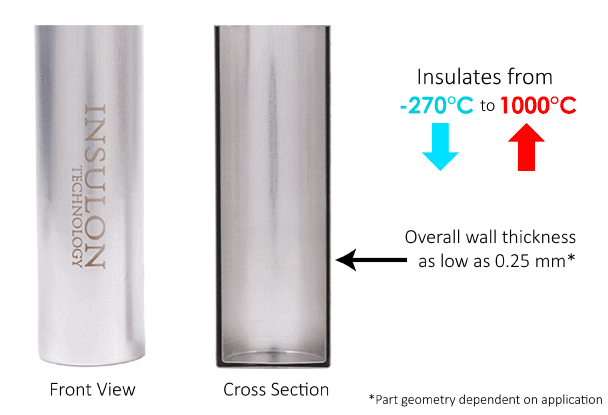Insulon® is different from conventional insulation materials – and so are the results. We collaborate with your team to develop advanced vacuum insulation and integrate it into your system to enhance thermal performance. Engineering vacuum insulation depends on partnership, innovative design, and expert manufacturing for sustained success.
Whether you’re seeking aesthetic improvements, reduced space consumption, or pure thermal performance, Insulon® can give your product an edge over the competition. Our goal is to deliver precise enhancements that help your application be the best it can be.

Collaboration
The first step in our Core Process is holding a discovery call to bring our teams together. During these calls, our goal is to understand the thermal challenge your application is facing. An intricate understanding of your needs and goals will help inform how we engineer your vacuum insulated components, as well as production development in later stages.

System-level engineering
Many of our projects focus on individual components within relatively complex systems. We understand the importance of having a holistic understanding of your application, and we prioritize careful consideration of each relevant parameter and their interactions. Component-level parameters include thermal, geometric, durability/longevity, and pressure requirements. System-level parameters include environmental stresses, chemical exposure, and material grade requirements.
Geometry
Once we have developed a holistic understanding of your application, we move on to the designing and prototyping stages. Our goal is to design a sophisticated, elegant solution that not only improves thermal performance but supports the overall functioning of your system. Insulon® is most often used with cylindrical, elliptical, and custom geometries.
Performance
With Insulon®, we have the unique ability to customize insulation performance with extreme attention to detail. Unlike most insulation materials, vacuum insulation does not have a static R-value. A range of factors can influence performance, including length, diameter, material selection, and more. By adjusting these parameters, we customize Insulon® to fit seamlessly into your application, consuming minimal space while delivering powerful thermal results.

When designing your prototype, we carefully consider each one of your requirements related to geometry, temperature, performance, durability/longevity, material, pressure ratings, surrounding environment, and more. If your application requires our highest thermal performance, we may propose a design that includes our multi-layer insulation in the vacuum annulus.
Once we complete your prototype design, our engineers hand-build each prototype at our Research & Development facility. We conduct quality control and testing based on geometry and performance before packing and shipping your prototypes to you.
Manufacturing
Our expertise in high volume production sets us apart from many custom manufacturing and engineering companies. Not only can we design and produce exceptionally unique vacuum insulation components – we can mass-produce them, in the thousands or millions, with high precision and expert quality control.
Just like your prototypes, your production assembly is catered specifically to the needs of your company. We focus on production development in the fourth stage of our Core Process. From tooling to automation, we ensure that each manufacturing decision focuses on delivering an exceptional final product that will help your application achieve peak thermal performance.
Different projects have different resources. With decades of manufacturing experience, our team can present a variety of options to arrive at a high-quality final product. For example, long term, high volume projects might benefit from a lower piece price; one way to achieve this is by increasing upfront investment in non-recurring engineering (NRE). On the other hand, if your project has limited capital funding, we can build a production process geared towards more manageable future installments.
Options for material sourcing can range from standard, off-the-shelf raw materials to custom-designed, deep draw tooling. Production lines may use fully automated cells, semi-automated cells, or forgo automation in favor of manual assembly. Our manufacturing team is here to guide you through these decisions, with the ultimate goal of producing high precision vacuum insulation designed specifically to enhance thermal performance in your application.
There is virtually no job too big – whether your requirements are in the thousands or millions, we have the ability and enthusiasm to take on the most ambitious projects. As always, if you have any questions, or if you’re interested in a potential partnership with Insulon® Technology, please contact us.


